|
By Creezy Courtoy, IPF Founder, Perfume Historian and Anthropologist Tracing the Historical Path of Incense, Myrrh and "Gold" As the essence of Christmas envelops us, the shimmering allure of gold intertwines with ancient trade routes and the symbolic journey of the Three Kings. Egypt's pursuit of incense, myrrh, and oud through the exchange of gold highlights the interconnectedness of cultures and the quest for precious treasures. Together, let us embrace the universal values of peace and unity, inspired by the story of the Three Kings, the timeless significance of gold in our celebrations and the spirit of peace. The Magnificence of Incense, Myrrh, and Oud During antiquity, Egypt was known for its rich trade connections and its desire for valuable commodities, including incense, myrrh, and agarwood. These aromatic substances held significant cultural and religious importance in ancient Egypt, and they were highly sought after for their fragrance and other perceived qualities. The fragrant smoke of incense was believed to carry prayers and offerings to the heavens. Myrrh, used in embalming and as a sacred offering, symbolized purification and spiritual connection. Oud, with its captivating aroma, was a prized ingredient in perfumery and incense-making. Egypt, renowned for its opulence and reverence for these aromatic substances, sought to obtain them from regions along the Perfume Roads. Incense: Incense was widely used in religious rituals, offerings, and ceremonies in ancient Egypt. It was believed to possess purifying and protective properties, and its fragrant smoke was thought to carry prayers and offerings to the gods. To obtain these sought-after varieties, Egypt had to engage in trade with regions like Arabia and the Horn of Africa, where these substances were produced. Myrrh: Myrrh, another aromatic resin, held religious and medicinal significance in ancient Egypt. It was used in embalming practices and as an offering to deities. Egypt's access to myrrh was limited, as it primarily came from regions like present-day Somalia, Ethiopia, and Yemen. Agarwood (Oudh): Agarwood, also known as oudh, is a fragrant wood derived from the Aquilaria tree. It has a rich, woody aroma and is highly valued in perfumery and incense-making. Agarwood was sourced from regions such as Southeast Asia and the Indian subcontinent. Egypt's Trade: Gold for Precious Fragrances The acquisition of these precious substances, however, often required the exchange of large quantities of gold due to their scarcity and demand. Gold, which was highly valued, served as a medium of exchange in international trade. As caravans traversed desert landscapes, laden with gold, they ventured towards regions like Arabia, the Horn of Africa, and the Indian subcontinent. Egypt's desire for incense, myrrh, and oud drove the trade of this precious metal, forging connections and fostering cultural exchange along the ancient trade routes. Gold mining, both in Egypt and through trade with neighboring regions, was a significant source of wealth for the ancient Egyptians. Egypt's abundance of gold during antiquity can be attributed to several factors, including its geographical location, natural resources, and historical developments. Egypt had its own gold deposits, primarily located in the Eastern Desert, near the Red Sea. Ancient Egyptians developed mining techniques to extract gold from these deposits. They employed methods such as panning, sluicing, and tunneling to access the gold-bearing ore. Egypt's location in northeastern Africa placed it in proximity to gold-rich regions, such as Nubia (present-day Sudan) and the Eastern Desert. Nubia, located to the south of Egypt, was particularly renowned for its gold mines. The Nubian region had significant gold deposits, including alluvial gold found in riverbeds and veins of gold embedded in rocks. Gold held immense economic value in ancient Egypt. It was widely used as a medium of exchange, a store of value, and a symbol of wealth. Gold was employed for various purposes, including trade, religious offerings, ornamental and luxury items, and the adornment of pharaohs and temples. The demand for gold, both domestically and internationally, contributed to its importance as a form of wealth for Egypt. Additionally, Egypt was able to acquire gold as tribute or payment from conquered territories or through diplomatic relations with neighboring regions. Gold held deep cultural and religious significance for the ancient Egyptians. It was associated with the sun god Ra and was considered a symbol of divine power and eternal life. Gold was used in religious rituals, temple construction, and burial practices, indicating its importance beyond its economic value. These factors combined to make Egypt a significant center for gold acquisition and accumulation during antiquity. Egypt's control over gold mining, its trade connections, and its cultural reverence for gold allowed it to amass substantial wealth in the form of this precious metal. The Journey of the Three Kings The Three Kings are believed to have originated from different regions of the ancient world. Melchior, often depicted as an elderly Persian scholar, hailed from Persia (modern-day Iran). Balthazar, portrayed as an African or Arabian nobleman, is thought to have come from Sheba or Arabia Felix (present-day Yemen). Lastly, Gaspar, a youthful figure, was said to have hailed from Saba (modern-day Ethiopia or Sudan). The Three Kings carried precious gifts symbolizing their reverence and respect for the newborn baby. These gifts were not only symbolic but held great value during the time. Beyond their biblical narrative, the journey of the Three Kings holds historical significance. It reflects the ancient trade routes that connected civilizations, the cultural exchanges that took place, and the role of Arabia as a center of commerce and knowledge. The gifts the Kings presented also highlight the importance of incense, myrrh, and gold in ancient societies. To reach their destination, the Three Kings embarked on a perilous journey across the vast Arabian Desert. This desert, with its shifting sands and treacherous terrain, presented numerous challenges. The exact route they took remains a subject of speculation, but historical evidence suggests they likely followed ancient trade routes and oasis trails, navigating by the stars and their knowledge of the desert. The Path through the Arabian Desert
From Persia to Arabia: Melchior, the Persian king, set out from his homeland, traversing arid plains and rugged mountains. His journey took him through the ancient cities of Persis, Parthia, and the Arabian Peninsula, eventually leading him towards the southern Arabian region. Melchior presented gold, representing kingship and wealth. From Saba to Arabia Felix: Balthazar, originating from the Kingdom of Saba, embarked on his expedition from the southwestern Arabian Peninsula. He embarked on a challenging trek through the deserts of Yemen, navigating the arid landscapes and ancient trade routes that connected the region with the rest of the world. Balthazar offered frankincense, a fragrant resin used in religious rituals, symbolizing divinity. From Saba to the Land of the Nile: Gaspar, the youngest of the Three Kings, hailed from the Kingdom of Saba. He embarked on his journey, traveling northward, along the Red Sea coast. Crossing vast stretches of desert, he eventually reached the ancient land of the Nile, making his way to the heart of Egypt. Gaspar bestowed myrrh, an aromatic resin used in embalming, symbolizing mortality and sacrifice. Gold or Liquid Gold? While Melchior is traditionally associated with offering gold, it is intriguing to explore the symbolic connection between gold and oudh or agarwood, the most precious scent in Arabia, often referred to as "liquid gold." Gold has long been associated with wealth, luxury, and kingship in various cultures. In the context of the Three Kings' story, Melchior's gift of gold symbolizes the recognition of the newborn baby's royal status and the acknowledgement of his future as a great ruler. In addition to its material value, gold also represents purity and divinity. Its shimmering brilliance has often been associated with the divine presence and elevated spiritual significance. Similarly, oudh or agarwood holds a special place in Arabian culture and has been treasured for centuries for its exquisite fragrance and rarity. Oudh is derived from the resinous heartwood of the agar tree, primarily found in Southeast Asia, India, and the Arabian Peninsula. It is a highly sought-after fragrance ingredient, renowned for its rich, complex aroma, often described as woody, balsamic, and captivating. The extraction process of oudh is meticulous and time-consuming, contributing to its high value. The term "gold" used to describe oudh or agarwood in the context of the Three Kings' gifts signifies its extraordinary worth and significance. Oudh is considered a precious treasure, a symbolic representation of luxury, spirituality, and devotion. Just as gold is associated with kingship, oudh is associated with nobility and opulence in Arabian culture. It is important to note that while the inclusion of oudh as "gold" in the Three Kings' story may have cultural significance and symbolism, it is not a historical fact but rather a poetic interpretation that enriches the narrative and adds to its allure. The inclusion of oudh as a symbolic representation of gold in some interpretations of the story is a way to add cultural richness and depth to the narrative. It draws upon the significance of oudh in Arabian culture and its association with luxury and opulence. The Symbolic Journey of the Three Kings, a desire for peace, harmony: The biblical tale of the Three Kings, or Wise Men, embarking on a journey across the desert to present gifts to the infant Jesus in Jerusalem, encapsulates the spirit of peace and harmony among the three Abrahamic religions. Symbolizing Judaism, Christianity, and Islam, the Three Kings epitomize the unity and shared reverence for the divine. The gifts they brought signify not only material wealth but also spiritual devotion and the pursuit of peace. Their passage through the desert echoes the importance of pilgrimage and the pursuit of spiritual enlightenment. The exchange of these precious gifts symbolizes a desire for peace, harmony, and the recognition of the divine presence within humanity.
0 Comments
Perfume has always been more than just a catalyst for emotions; its impact extends beyond mere pleasure and sentiment, encompassing the health of our bodies and vital energies. While modern society tends to limit perfume's significance to pleasure and emotional wellness alone, it is crucial to expand our perspective. Odorant molecules can subtly influence each body system through the olfactory and cutaneous pathways, making perfume a powerful tool for holistic daily well-being. As a Master Natural Perfumer, aromatherapist, and Naturopath with over 26 years of practice, I have witnessed the profound effects of olfaction and perfume firsthand upon the body, mind, and spirit, leading me to create numerous botanical perfumes for international brands, whether in cosmetics home or for fragrance use. By embracing botanical perfumes crafted with natural and organic ingredients, we can reconnect with nature and harness their healing properties. These perfumes benefit us personally and contribute to a more sustainable and eco-friendly approach to fragrance. So, let us venture into botanical perfumes, exploring their positive effects on our body, mind, and spirit. By embracing this holistic approach to fragrance, we can enhance our well-being and cultivate a deeper connection with the world around us. Perfume's Historical Significance Throughout ancient civilizations, perfume was employed for its therapeutic properties, addressing various ailments of the body and mind. It was more than just a pleasant scent; it was a form of medicine. For instance, perfumes were used as incense, pomanders, and aromatic vinegar to protect the body from miasmas. These fragrant materials, made only with natural herbs, oils, and plant essences, were revered as medicinal support. For instance, herbs, crushed resins, and spices like clove, myrrh, cinnamon, and agarwood were commonly used and known for their antibacterial properties. In addition to its medicinal uses, fragrance played a vital role in spiritual and religious practices. Perfume oils and incense facilitated a deeper connection with the divine and promoted introspection. Burning incense made one feel closer to the divinities, and the smoke of frankincense, myrrh, benzoin, agarwood, guaiac wood, and sage, among others, were considered portals to the higher self and raised consciousness. Perfumes have long been associated with sensory pleasure, enhancing seduction, and captivating our senses. Opulent and narcotic flowers, such as tuberose, rose, narcissus, champaca, davana, and ylang-ylang, were the perfect assets to attract and seduce a loved one. These scents were known to raise libido and desire, reflecting the cultural preferences of their respective countries. By Françoise Rapp, IPF Chair France and Certified Aromachologist The Role of a Natural Perfumer: Reconnecting with Ancestral Heritage As we delve deeper into the interconnectedness of our internal systems and the profound effects of natural essences, it becomes evident that the role of a natural perfumer is of utmost importance. A natural perfumer should master the properties of these essences and harness their potential to benefit our well-being. By understanding the therapeutic properties of various botanical ingredients, a natural perfumer can create fragrances that please the senses and promote physical and emotional health. By reconnecting with our ancestral heritage, a natural perfumer brings the wisdom of ancient cultures to today's urban life and consciousness. They honor the traditions and practices of our ancestors, infusing their creations with the knowledge passed down through generations. Natural perfumers use natural ingredients and sustainable practices to ensure their fragrances benefit individuals and contribute to the planet's well-being. The Olfactory and Cutaneous Pathways When it comes to the power of scent, there is no magic involved. The real magic lies in the composition and artistry of perfumers. When we inhale scent molecules, they interact with our olfactory receptors, triggering brain reactions. Specifically, these reactions occur in the limbic system, which is responsible for our emotions and memories. Through this intricate anatomical and neurological connection, we discover the direct relationship between inhaled odors, memories, feelings, and their influence on our behavior and well-being. The olfactory information, carried by neuro-electric signals, travels from the olfactory bulb through the olfactory tract and into the limbic brain. This information is divided into three circuits, leading to the hippocampus, the amygdala, and the septal nucleus. However, the hypothalamus plays a crucial role in various body functions as it controls the vegetative nervous system, the endocrine system, body temperature, hunger, thirst, and the sleep cycle. It performs these functions by processing stimuli from the peripheral, thalamus, cortex, and limbic systems. Additionally, the hypothalamus regulates the pituitary gland, which stimulates other endocrine glands such as the thyroid, parathyroid, adrenals, pancreas, and gonads. These glands produce hormones and cellular messengers, creating or modifying our physical and physiological behavior. Therefore, inhaling a natural fragrance sets off a complex biological pathway that ultimately leads to a shift in our behavior due to a chain of chemical reactions. The Influence of Skin When we think of perfume, our minds naturally gravitate toward the sense of smell, often neglecting the significance of our skin. However, perfumes were traditionally applied directly to the body for a reason. The heat of our skin allows the fragrance to develop and disperse in a beautiful sillage. At the same time, its pH level, whether acidic or not, enhances the development of specific fragrant notes and facets. Moreover, how scents applied to our skin can affect our overall well-being and vital energies is noteworthy. When perfumes are applied to the skin, they permeate the epidermis layers, facilitating direct absorption into the bloodstream. As a result, these fragrances can influence the body's physiological processes. So, how do we highlight the importance of the relationship between the skin and the brain? Firstly, these two organs share the exact embryological origin. On the 21st day of embryo development, the outermost cell layer gives rise to the nervous system and the epidermis. This shared origin explains the similarities between skin cells and neurons. The skin can be metaphorically described as a "second brain" or an "extension" of the encephalon. This connection between the skin and the brain emphasizes the profound impact that scents applied to our skin can have on our overall well-being and state of mind. It showcases the intricate interplay between our sensory experiences, memories, emotions, and the physiological responses within our bodies. Understanding and appreciating these relationships can enhance our appreciation for the art of perfumery and the transformative power of scent. The Multifaceted Effects of Odorant Molecules Scientific research has extensively studied the positive impact of natural essences on our psyche. At the same time, aromatherapists have recognized the critical role of essential oils in our body system and energetic anatomy. However, to fully comprehend the potential of other plant extracts, such as absolutes and CO2 extracts, it is crucial to understand the biochemistry of these natural essences. This knowledge is not only valuable for aromatherapy products but also for natural perfumes. Natural essences and extracts, as specific biochemical molecules, are integral to the identity of plants. These molecules can stimulate neurotransmitters, influencing mood, stress response, and cognitive functions. Various biochemical families, including monoterpenes, monoterpenols, aromatic aldehydes, and oxides, have been identified to impact vitality, happiness, and uplifting mood. The complexity of a plant's effectiveness arises from the totality of its composition and the interactions between each plant component. Scientists are continuously discovering and unveiling essential information about the role of specific aromatic molecules on neurotransmitters, such as linalool's impact on dopamine and serotonin. Although the subject is complex, it represents the future of alternative medicine. Several studies have reported increased dopamine levels in different brain regions, particularly the striatum, after exposure to linalool. Furthermore, the anxiolytic action of several essential oils rich in linalool is associated with the dopaminergic domain. This increase in dopamine levels partially explains linalool's anxiolytic action, as dopaminergic activation impacts pituitary activity and may directly or indirectly influence the level of ACTH. Research has shown that linalool decreases cortisol levels in the body, which is associated with reduced stress. Modulating cortisol levels could regulate pressure and limit its adverse effects. Endocrine System Influence Perfume molecules can interact with the endocrine system, regulating hormone production and affecting overall well-being. However, it is essential to note that certain synthetic perfume compounds can also have endocrine-disrupting effects. On the other hand, natural essences possess a complex biochemistry that offers potential benefits. There is ongoing research on plant hormones and their effect on the endocrine system. It is believed that essential oils impact the general endocrine system by mimicking human hormones through the action of plant hormones, also known as "phytohormones." These phytohormones can help rebalance, stimulate, or calm the endocrine system. Additionally, essential oils can have specific actions on glands. For example, cinnamon and coriander can help rebalance blood sugar levels, while black spruce and pine stimulate the adrenal cortex. Botanical Perfume: The Bridge of Elemental Nature Between Consciousness Natural essences profoundly affect our inner well-being, extending far beyond what we have previously explored. As a steadfast ally, they have accompanied human beings throughout history, harnessing their subtle powers. As consciousness evolves globally, perfume continues to weave its narrative. Forward-thinking companies have proclaimed that the products of today and tomorrow will significantly impact our soul's well-being. Perfume, breaking free from the confines of the market and fashion dictated by emotions, reclaims its original purpose. It aligns itself with the essence of life, reconnecting us with the elements of Nature in a genuine and awe-inspiring manner. Uncertainty looms over the future in a world clouded by a continuous stream of environmental, health, geopolitical, and political crises. This is precisely why an increasing yearning for peace and freedom is a profound call to reconnect with Nature. More than ever, botanical perfume influences our bodies and consciousness. This evolution transcends convention and paves the way for new well-being categories. Perfume reclaims its noble status, bridging the gap between the physical body, its divine essence, and the Divine itself. It carries a sacred dimension that holds profound significance today, drawing inspiration from a harmonious blend of tradition and modernity. The role of the natural perfumer extends beyond creating unique and aesthetically pleasing compositions; it facilitates a genuine and heartfelt reconnection with the power of Nature and the elements. Simultaneously, it awakens the sacred within us, raising our consciousness and transforming our subtle body chemistry. The Power of Genuine Natural Essences A crucial aspect lies in the natural perfumer's meticulous selection of high-quality essences. This selection process requires a comprehensive understanding of each essence, encompassing its scientific and chemical properties, medicinal applications, olfactory characteristics, and holistic attributes. Numerous factors influence the quality of a plant's essence, including its origin, cultivation methods, the timing of its harvest, and the preservation of its olfactory and "medicinal" qualities through appropriate extraction methods (such as gentle steam distillation below 100°C). Furthermore, proper storage in professional-grade bottles at suitable temperatures is paramount. A perfume's olfactory appeal and well-being benefits depend significantly on the exceptional quality of the chosen essences. Failing to adhere to the steps above will result in essences with diminished olfactory and biochemical profiles, yielding lower-than-expected results. In today's world, it is evident that the role of a natural perfumer extends far beyond being a creative artist or a marketer. Their work is significant in our heritage and profoundly impacts our well-being. In recent decades, perfumery has been seen as a blend of creativity and marketing. However, in recent times, the natural perfumer's role has evolved to encompass much more than just these two aspects. The compositions created by natural perfumers are not merely a way to reconnect with nature. Instead, they are potent vectors for expanding consciousness and promoting overall well-being. Each fragrance composition crafted by a natural perfumer has the potential to awaken our senses and elevate our spirits. A successful natural perfumer must be aware of the beneficial effects that their compositions can have on individuals. These fragrances can evoke emotions, uplift moods, and provide holistic benefits. The perfumer must understand the intricate relationship between scent and our physiological and psychological well-being. By harnessing the power of natural ingredients, the natural perfumer creates fragrances that smell pleasant while positively impacting the user’s overall wellness. By Creezy Courtoy, IPF Founder and Chair and Perfume Anthropologist Understanding Scent Preferences for Creating and Distributing Fragrances Distributing a perfume in several countries can be a real challenge. It can be just a failure for famous brands, but a dangerous game for small brands who can financially lose everything. In the art of fragrance creation, understanding the anthropology of perfume is essential. By delving into the diverse scent preferences shaped by culture, region, and individual sensitivities, fragrance creators can craft scents that resonate on a deeper level. The ability to influence others through the strategic use of preferred scents becomes more attainable when armed with the knowledge of anthropology of perfume. So, let's embrace the rich tapestry of scent preferences and create fragrances that captivate the senses and forge lasting connections. Men and women have long recognized the power of scents in influencing their fellow humans. While it is impossible to predict exactly how an individual will respond to a particular smell, psychologists have discovered intriguing connections between odors and memories. For example, a single floral scent can evoke memories of a crowded elevator, a funeral, an old boyfriend's excessive aftershave, or even the onset of hay fever. Despite the varying responses, scientific investigations have revealed common preferences among sexes, cultures, age groups, and personality types. By understanding these preferences, perfumers can safely select the countries where their products will be successful. Cultural Influences on Scent Preferences Cultures play a significant role in shaping scent preferences and the ways in which scents are used. Let's explore some fascinating examples: The Japanese: Perfuming Daily Life
In Japanese culture, scent has permeated almost every aspect of daily life. From personal care products to household items, the Japanese have cultivated a deep appreciation for fragrance. They even engage in games with friends and family that involve identifying various smells. Understanding the importance of scent in Japanese culture can provide valuable insights when creating fragrances for this audience. In contrast, the Anglo-Saxon approach to scent is more understated. Publicly smelling one's food or wine is considered uncouth in their culture. However, the bouquet of wine and the taste of food both heavily rely on the sense of smell. Anglo-Saxons prefer subtler scents when it comes to personal fragrance, avoiding being too "obvious." Respect for cultural norms is crucial when designing fragrances for this audience. Across different cultures, there are notable variations in scent preferences. For instance, Orientals appreciate heavy, spicy, and animalistic perfumes. Valerian root extract, which is detested by most Europeans, is favored in Oriental cultures. On the other hand, Asians may struggle to understand the Western love for pungent cheeses. Recognizing these cultural differences is essential for creating fragrances that resonate with specific target markets. Regional Influences on Fragrance Choices Apart from cultural influences, regional factors such as climate and environment also shape fragrance preferences. Northern Europeans, living in colder climates, often prefer heavier fragrances that provide warmth and comfort. In contrast, Mediterraneans are drawn to sophisticated floral scents, likely due to their love for being surrounded by flowers. Taking these climate-based preferences into account can enhance the effectiveness of fragrance creations. Universally Pleasant Smells and Aversions While there are cultural and regional variations, it is safe to say that there is a broad agreement within the human race about what smells pleasant and what doesn't. Most people appreciate flower and fruit scents, while being repulsed by foul odors such as rotten eggs, fish, or stagnant drains. Understanding these universally pleasant and unpleasant smells can guide fragrance creators in developing appealing and attractive scents. People's responses to scents can also vary based on their individual sensitivities, as well as the influence of education, societies, and marketing. Therefore, do not miss your opportunity to sell and distribute successfully your perfumes worldwide. Learn more about the Anthropology of Perfume and get ready for your perfume distribution. By Terry Johnson, IPF Chair USA and Busines and Marketing Expert Competition in today’s markets has never been stronger.
Yet, I continually see examples of natural perfume and natural essence businesses that have not made many adjustments to their sales efforts to overcome the fierce competitive headwinds brought on by a deadly pandemic, numerous supply chain issues, and high inflation. These conditions have seriously changed consumer perspectives and require frequent reviews of sales and marketing strategies to reflect current realities rather than relying on consumer preferences and priorities that no longer exist. You and everyone working with you should put on their selling hats for a while and focus on how to get consumers needing to purchase your products at premium prices, not just wanting to. In the High-Value Natural Perfume consumer market, the first order of business is to identify every potential value feature of your products and incorporate those value features into selling benefits for consumers justifying premium pricing you need to charge. When consumers see something for sale that appears attractive to them, they determine the level of value that the product could provide them, and then they check the price. If the level of value is above the price, they are more likely to buy. If the level of value is below the price, they are less likely to make a purchase. Selling the value and benefits of your products greatly increases the likelihood of closing the sale profitably. Here are 7 solid tips on strengthening and updating your Natural Perfumes and Essences selling strategies:
Terry Johnson is teaching and consulting at The Natural Perfumery Teacher's Academy. If you want to learn more about Business and Marketing in the Natural Essences World, you can follow his course or contact us for consultancies. By Françoise Rapp, IPF France Chair and Natural Perfumery Expert How to professionalize and structure your scent design for more ease and efficiency? The creation of a perfume is much more than an assembly of natural raw materials. Each natural essence each containing up to 300 molecules, their mastery in the composition of perfumes can prove to be perilous. A beautiful perfume is well thought out and inspired but above all well-constructed so that each ingredient is in its right place to better delight the senses. Being a natural perfumer requires different talents, both artistic and technical. Being a perfumer is a profession that can be learned, and it is important to master the fundamental basics if you want legitimacy. How to organize your perfume organ and select quality natural essences is learned by mastering olfactory evaluations and by reading technical documents provided by suppliers. How to make and follow your stock, make accurate weighings, and above all learn effective methods which are real guides in the composition of a structured perfume. Counting drops in the development of a perfume has no place. You must do the weighings and learn how to do them well to design reliable and serious documents. From experience, I have met many natural perfumers who proceed with counting drops, and then often find themselves in the delicate position of not being able to produce their perfumes even on a scale of a few dozen bottles. In addition, they lose all legitimacy and seriousness during exchanges with other professionals. Most of them lack a technical mastery of weighing, working with automated calculation tables, and understanding the reading of technical documents of the raw materials with which they worked. One step was missing: that of a more in-depth method. If you work without real knowledge of these aspects, there will always come a time when the harmonious business development of your company will be limited. This is why I have designed two effective methods and processes to deepen the fundamental bases of perfumers so that they can design natural perfumes of high olfactory quality with mastery. These two distinct methods are adapted according to distinct projects and inspirations as well. The HEART® and SPLIT® method have proven themselves over nearly 26 years of various experiments! The HEART® method, for example, is perfectly suited to so-called thematic perfumes whose inspiration is a raw material, an olfactory family for example. The SPLIT® method applies to so-called feelings, history, and memories projects. This last method helps to tell a story, to develop it even if the basis of a perfume is to take our client on an imaginary journey, this method will be more targeted in its structure for an effective rendering. Practicing and following these two methods not only allows you to build a beautiful perfume but also to magnify your first inspiration. In the creation of a beautiful natural perfume, each step is important:
From the quality of the raw materials, to their selection for the project, to meticulous dosage formulations, and to the design of tools such as formulation tables to professionally preserve and ensure their successful development. If you work as an independent perfumer for brands, this is another subject because you must communicate precise documents so that the formulas are easily reproducible by service providers. This is how the Scent Design & Formula-Building masterclass brings all this mastery accompanied by many blank documents that you can use throughout your career as a natural perfumer. These are real supports in addition to two methods whose processes are clearly explained. This masterclass is suitable for all perfumers and natural perfumers who wish to go further in the professionalisation of their work and thus succeed in their passion. Enroll now for the Scent Design & Formula Building Masterclass Session opens each first Monday of the month. Next session opens on March 6. Multiple payments available. By Creezy Courtoy, World Perfume Historian and Anthropologist My first passion has always been the impressive history of perfume and I could never think the way I think today if I did not spend all my life collecting perfume antique artworks and searching for the true perfume history. When you start searching, it never ends and still today I am looking for something; each piece leading me to more research. In the Arab World, perfume was precious, it was considered as pure gold. Let me invite you to follow me on the history of perfume in that part of the world. Circa 4000 B.C., the Sumerians built the first City States such as Sumer, Ur, Uruk or Nippur, along rivers. “Mesopotamia” literally means “the country between the two rivers”. Located between Tiger and Euphrates, this region currently corresponds to Iraq, Syria, Lebanon, Southern Turkey and Israel. Cuneiform writing carved onto the clay tablets reveals formulas and perfumes used by these ancient populations since the middle of the third millennium B.C. Lebanese cedar, cypress and myrtle were the three most used fragrances. Originally, the gods loved natural perfume and got close to those who wore them. This is why the servants of the temple covered their bodies with myrtle oils before carrying out the rituals and the offerings to the numerous gods. Perfumes were reserved to divinities, kings and temple worship. Gilgamesh, King of Uruk, lived a rather eventful life, characterized by his vain quest for immortality. Perfume, the most noble and precious element then made its way into his alchemy research. The relation between medicine and gods was very close. One of the healing gods was the two-headed snake Ningishzida. The snake, symbol of eternal life, might have been the first icon of caducei. His name in Sumerian is translated as “lord of the good tree”. About 1000 years later, the Akkadians replaced the Sumerians and created the first empire of the world ruled by Sargo the Ancient.
Phoenicians sailors and traders settled on the coast of Lebanon and build colonies in Cyprus, Crete, sicilia, malta and Northern Africa. Tyr, their capital, having enjoyed a permanent relation with Egypt and Mesopotamia, became one of the most important ports. Circa 1900 B.C., Babylonians replaced Akkadians. Hammurabi (1792-1750 B.C.), created the powerful empire of Babylon. Babylon remained the main warehouse of spices from all over the world for a long time. It received spices from India and from the Persian Gulf, scented gums from Arabia and balms from Judea. Nabuchodonosor I (1124 B.C.) had his palace built with cedar beams and cypress doors that smelled kilometers away. According to Herodotus, over 1000 talents of pure incense were burnt every year on the altar of Belus. Zoroaster prescribed the use of perfumes on altars five times a day. In the hanging Gardens of Babylon, one of the seven wonders of the Ancient World, all the scented plants were showcased. According to Diodorus, (Greek columnist of the 1st century, contemporary of Julius Caesar) cedar, mimosa, Arabian jasmine, lily, crocus, iris, violet and rose, gave the Kingdom the reputation of owning the most beautiful roses of the Ancient Orient. Chaldeans, circa 600 B.C., represented the last civilization of Mesopotamia with two famous Kings: Nabopolassar and Nabuchodonosor II. They inherited a great culture, developed astronomy, astrology and added all this science to the Art of Perfumery. Plants and resins must be collected at certain times in the day, or at a precise moment in the year in order to reinforce their efficiency. The fall of Babylon, conquered by the Persians in 539, did not upset the trade of perfumes. Focused on the fringes of the desert, the caravan kingdoms owed an important part of their prosperity to the trade of perfumes. Sidon (then Carthage) replaced Babylon as the capital of perfume and spices. For the Cananeans as well as for Babylonians, Phoenicians and Sabaeans, perfumes and spices were both pure gold and divine message. For thousands of years, they carefully preserved the trade and even caused wars. Arabia Felix, also called the “Fertile Crescent”, stretched from Oman to the Suez Gulf and across its length were paths taken by the caravans. Called “The Perfume Roads”, these ancient trails linked the south to the North of this continent and crossed the deserts of one of the oldest countries in the world. To ensure the security of the trade on The Perfume Roads, in the 10th century B.C., Balkis, the Queen of Sheba organized a meeting with Solomon, the Hebrew King... If, like me, you are impassioned by World Perfume History, I will be happy to transmit my knowledge to you and tell you more about the Perfume History in the Arab World. We definitely need more perfume history teachers to make sure the perfume heritage will be preserved and transmitted to the next generations. By Terry Johnson, IPF Vice Chair and Business and Marketing Expert in the Natural Perfumery Environment When great people pass, we often reflect on what made them great in the first place. I say this having seen the widespread tributes and sympathy for Britain’s Queen Elizabeth II, who passed away after 70 years on the throne; which begs the question: How will your Natural Essence business be remembered? Will your business have a positive legacy because of where and when you began your business? Or how much money your business made? Or will it be because what you did with your business made the world a better place for it being here? The driving force behind a memorable business legacy comes from starting with a clear Vision/Purpose that includes what you believe will make the world a better place, and then successfully executing the Mission based on your Vision to make the world a better place. Everyone in the Natural Essence Community should consider the amazing opportunities we have to demonstrate to consumers how valuable Natural Essences and products made from Natural Essences are to consumers. Consumers will appreciate how much these Natural Essences contributed to their long-term wellness and well-being and will be far more likely to develop strong, lasting brand loyalty to those who provided them with superior products and services. Here are several Action Steps to help you achieve a memorable business legacy: 1. Understand and Follow the New Luxury Code of Respect. The New Luxury Code is a great starting point because it continually reminds us of the importance of respect, beginning with self-respect and then expanding outward from there. Mutual respect between members of the High-Value Natural Essence Community is necessary for development of better working relations and supply chain efficiencies within the entire Community. 2. Be the Expert in your Community Now more than ever, consumers are looking for ways to improve their well-being for themselves and for their families. The pandemic has changed consumer purchasing behaviors and preferences creating opportunities for everyone in Natural Essences. This means first educating yourselves and then passing on what you’ve learned to the communities you do business with. If you haven’t already, head to IPF’s Teacher’s Academy for up-to-date courses to educate yourself so that you can effectively teach others. 3. Pass on the Fascinating Heritage of Natural Essences Those who read Creezy Courtoy’s The Perfume Roads understand the tremendous impact perfumes and other natural essences have had on human wellness worldwide for millennia. Much of this heritage is in danger of being lost forever, and it should be the responsibility of the Natural Essence Community to preserve this heritage and educate consumers of its importance. 4. Support Our Bees What will be our legacy for children and grandchildren if we leave a world to them without flowers? Flowers and plants largely depend on pollination for their survival, yet despite this fact bees are being threatened and need to be protected, made healthy, and kept busy. Get to know more about bees and their importance and then educate consumers on how vital bees are to our future and what they can do about protecting them. Without bees, we have nothing. 5. Make an impact by Selling Superior Products!
No one should expect consumers to have a superior experience from using products that are not superior to begin with. On the other hand, products that provide superior results are always remembered! Your Natural Essence business has the power to touch and influence many lives and making a conscious effort to sell superior products assures your business will remain relevant and impactful with consumers in the long term. Enroll for a Business and Marketing Course in the Natural Perfumery Environment with Terry Johnson By Creezy Courtoy, World Perfume History Expert and Teacher Located in Uttar Pradesh, Kannauj is a small, dusty town spreading along the banks of river Ganga. It is one such amazing place that has a centuries - old legacy of producing long-lasting perfumes and is often compared to Grasse, France. The perfumes that made Grasse popular are Jasmine, Centifolia Rose, Lavender, Orange blossom and wild Mimosa, a very different palette compared to the Sandalwood, Cedar, Heena, Jasmine, Attar Mitti, Kewda Marigold and Damascena Rose of Kannauj. The process of making perfume has been mentioned in the scriptures of Ayurveda since ancient times. In some Vedas, prescriptions of 3500 years old, mention fumigation of aromatic woods. It is written in the Vedas that when Yajnas were performed a lot of things went into it as a sacrifice. A foul smell used to emulate when meat was sacrificed, so in order to eliminate the smell aromatic ingredients were offered into the fire. Thus, the art of extracting scents from different substances began. Legend ascribes the invention of distillation to an Indian Princess named Nùr Djihân. In 1568, on the morning of her wedding with Akbar, the Mongol Emperor, Nur noticed foam vapors floating to the surface of a rosewater fountain. From then on, she understood the process of distillation, the most common way to extract essential oil from a plant. In Kannauj perfumes are prepared with the help of the hydro-distillation process. Nickel plated copper vessels are used as they do not rust. 1. Flowers are soaked in water and heated in containers 2. Condensers are filled with oil. 3. On boiling, the vapour of the flowers passes through the hollow bamboo pipes into a condenser. 4. The oil present in the condenser absorbs the vapour’s fragrance. 5. This process continues for around five hours and excess water is separated from oil after the condenser completely cools down. 6. As per the quality of perfume, the process is continued on the same oil for 30 days. Can you ever think of using the smell of rain to make perfume?
When you set your foot into the perfume capital of India and try amazing perfumes there, it feels ‘time just stops’. Kannauj will sweep you away in an era of attars. From ancient emperors like Shah Jahan to modern Kings of the Middle East, attar, the Indian perfume is largely preferred to most high-end branded fragrances. How many fragrances can you think of when talking about attars and perfumes? Just the basic ones like a rose, sandalwood, jasmine oil and other common fragrance. Can you ever think of using the smell of rain to make perfume? Villagers at Kannauj can make this possible by reproducing the aromatic fragrance of rain. Have you ever heard of Attar Mitti ? Attar Mitti, also known as itr–e–khaki is one of the unique attars found in Kannauj The redolence of this attar has a sweet blend of woody note of the Sandalwood and an earthy smell of clay. Attar Mitti is a co distillation of earthen clay pots with the steam bearing the scent of the soil, the clay is infused over sandalwood oil. Over several rounds of distillation / infusion the base oil is imbibed with the smell of the clay till it starts smelling of petrichor. The attar known as Attar Mitti is fancied by end consumers trying to get as close to the olfactory sense of the rain. It also is used by the perfumers to inculcate an earthy note in their perfume compositions. Are you looking for more knowledge about India Perfume History ? Enrol for Creezy Courtoy's World Perfume History Master Class |
Archives
March 2024
Categories
All
|
- Home
- About
- Why choosing us
- Mission
- Academicians
- IPF Certification
-
COURSES
-
MASTER CLASSES
- Teaching Methodology
- Natural Raw Material Extraction Methods >
- Natural Candle Making
- Healing Gardening
- Sustainable Oud MasterClass
- World Perfume History Master Class
- Scent Design and Formula Building >
- Fragrant Botany & Chemistry >
- Perfume Design, Concept and Storytelling
- French Natural Aromachology #1
- French Natural Aromachology #2
- Olfaction Training for Children
- Accords - Musks
- Accords - Chypre
- Accords - White Florals 1
- Accords - Fougeres and Aromatics
- FRAGRANCE DEVELOPMENT
- SPEAKERS
- EXHIBITIONS
- Partners
- Blog
- Contact
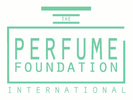
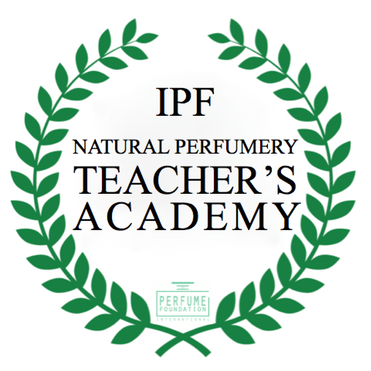

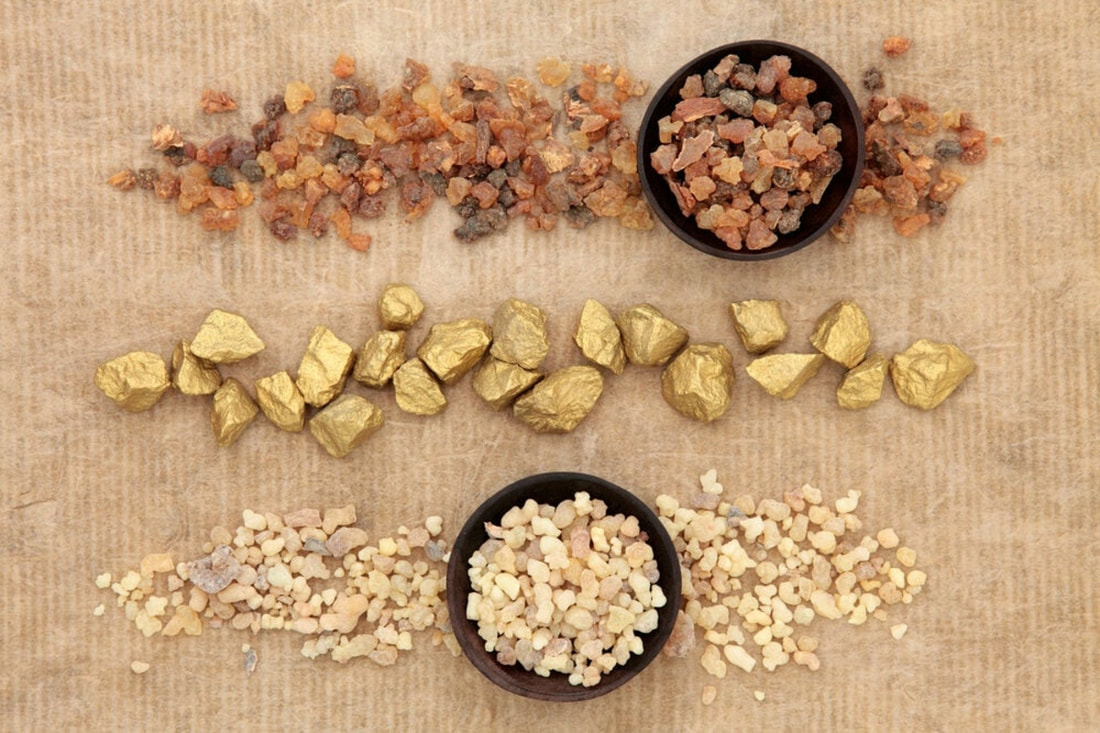
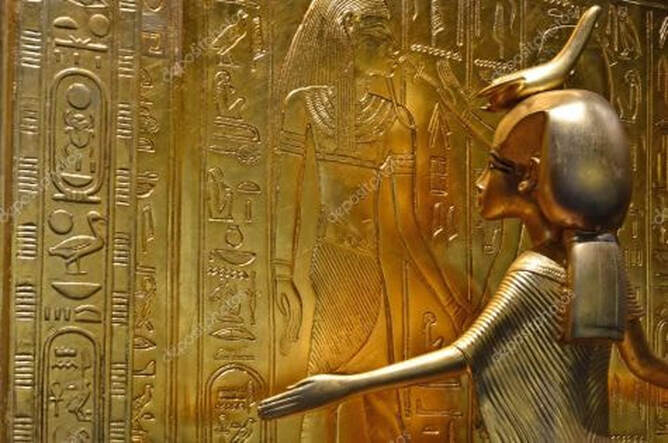





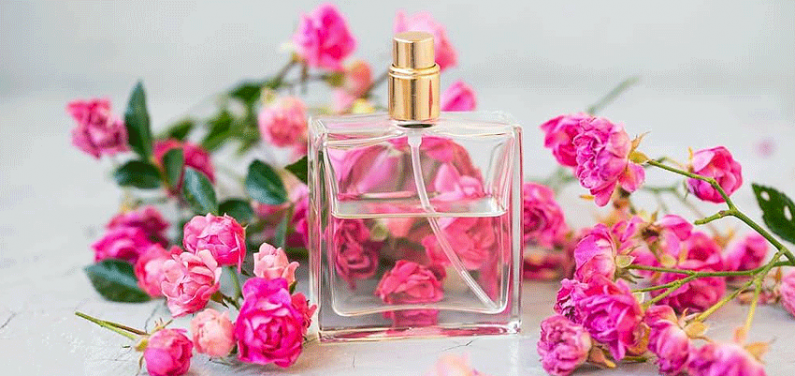
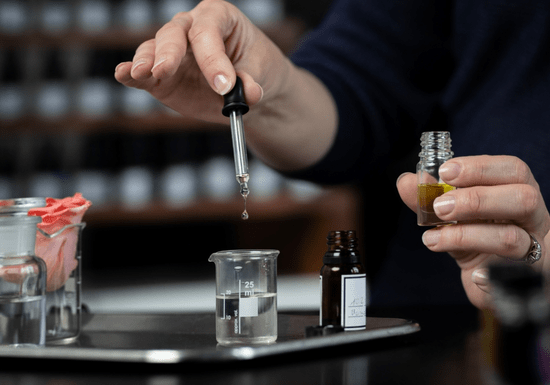
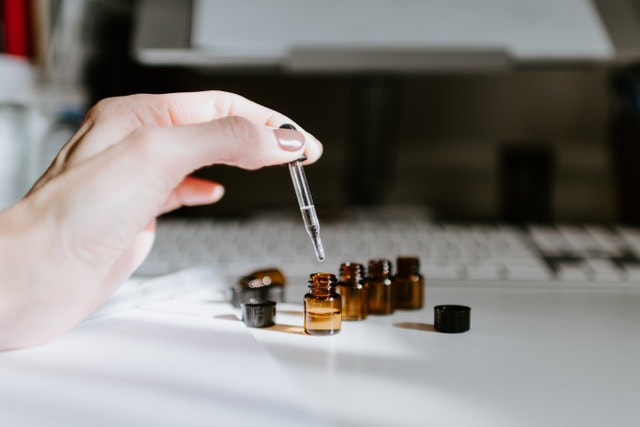
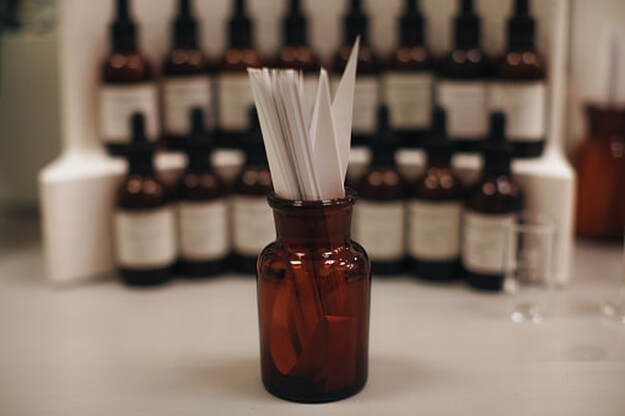
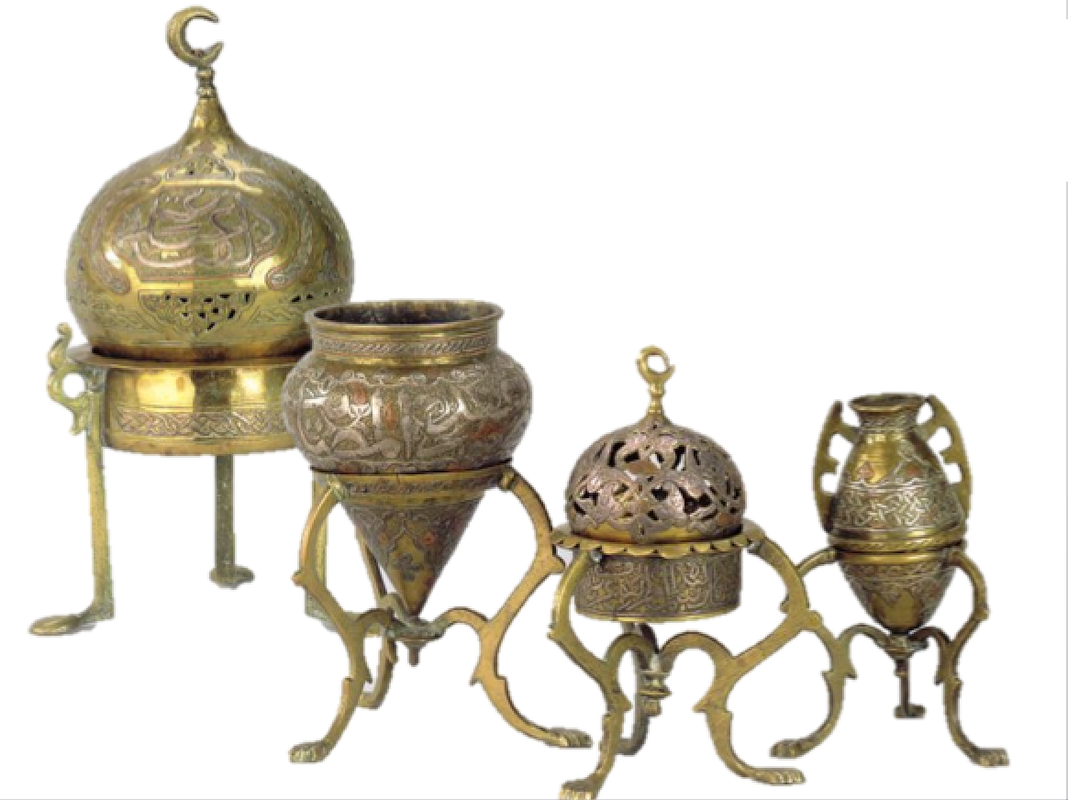

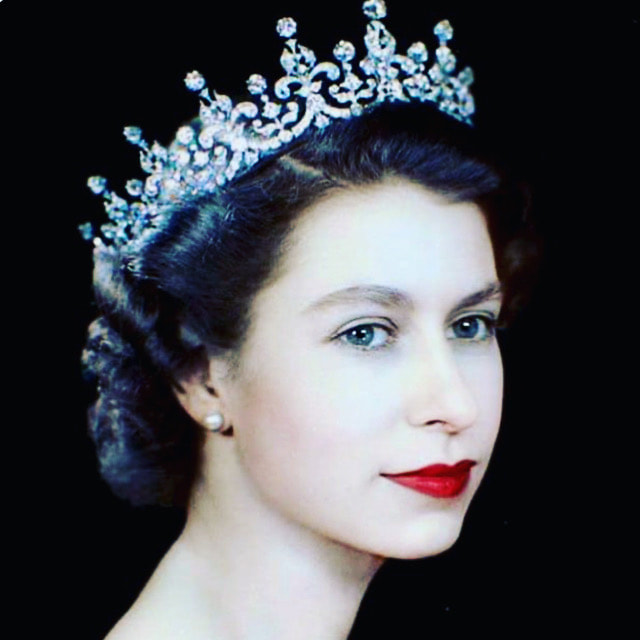


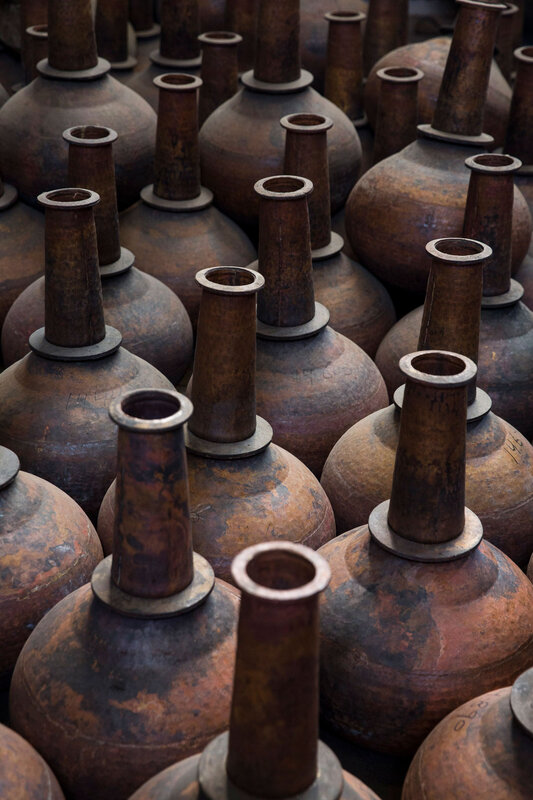
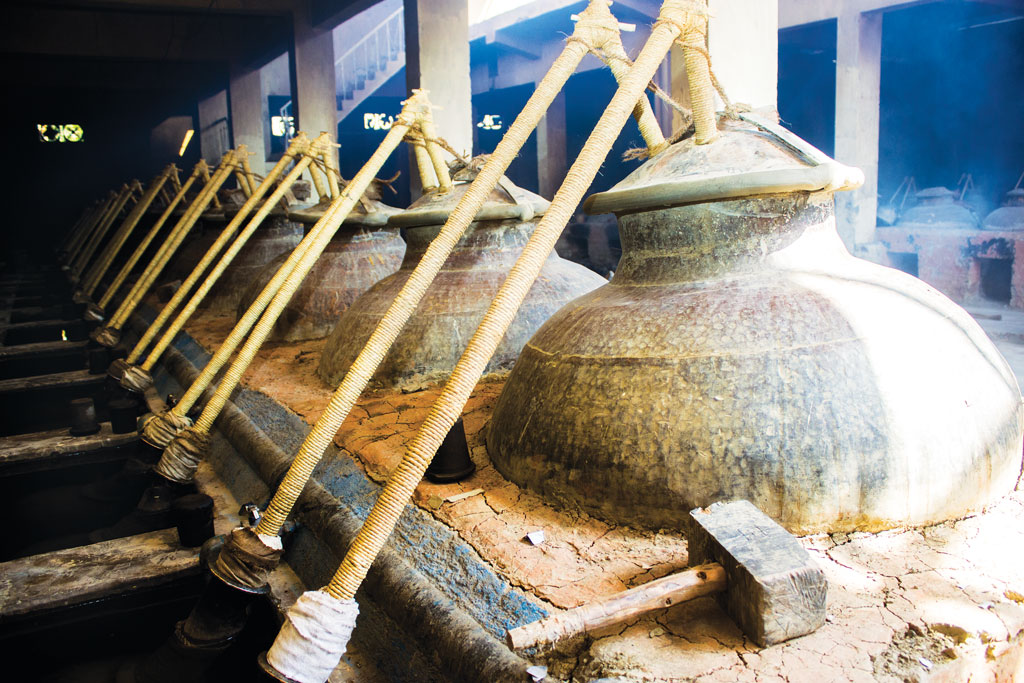
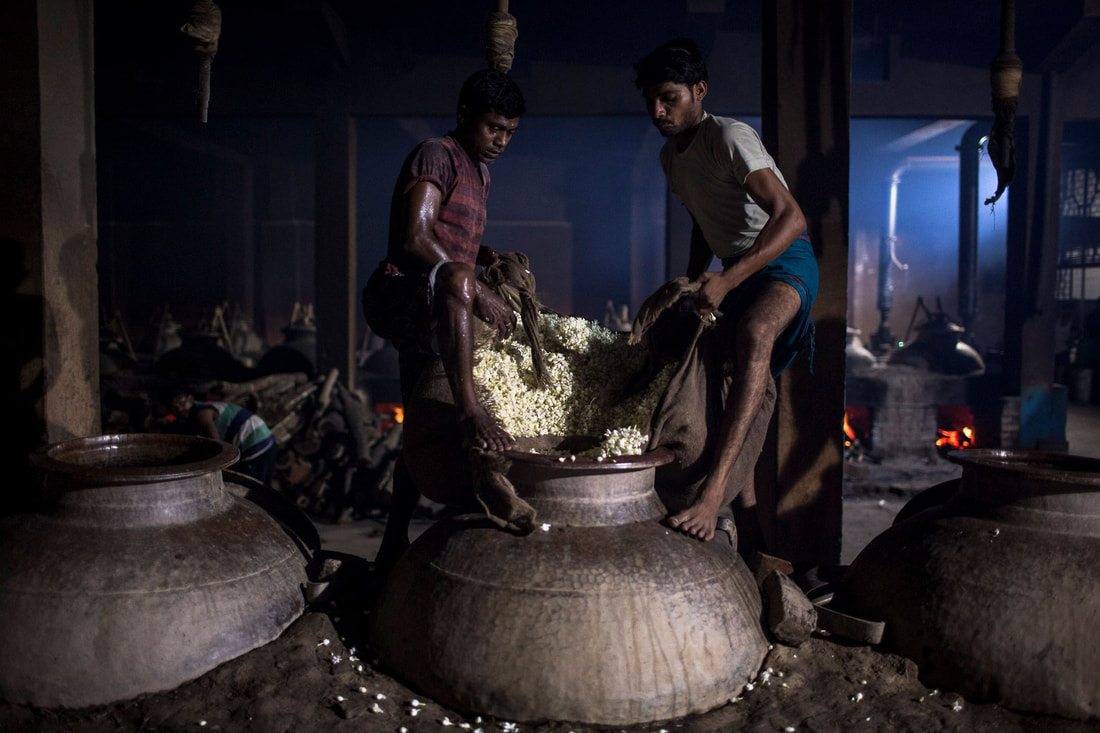
 RSS Feed
RSS Feed
